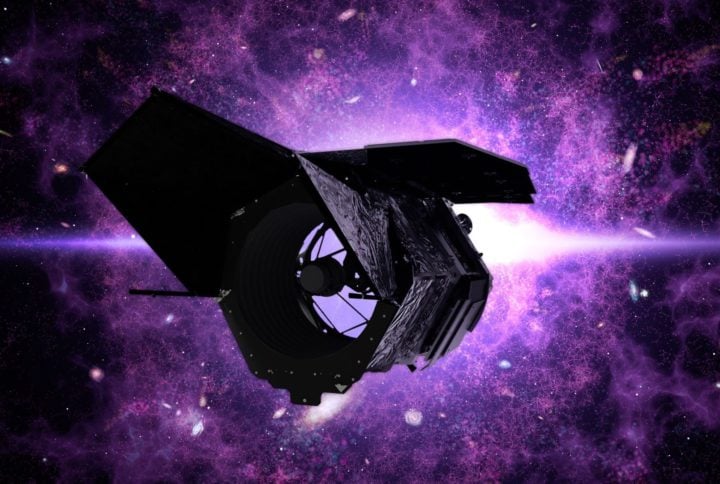NASA’s Nancy Grace Roman Space Telescope will pair space-based observations with a broad field of view to unveil the dynamic cosmos in ways that have never been possible.
“Roman will work in tandem with NASA observatories such as the James Webb Space Telescope and Chandra X-ray Observatory, which are designed to zoom in on rare transient objects once they’ve been identified, but seldom if ever discover them,” said Julie McEnery, Roman’s senior project scientist at NASA’s Goddard Space Flight Center in Greenbelt, Maryland.
“Roman’s much larger field of view will reveal many such objects that were previously unknown. And since we’ve never had an observatory like this scanning the cosmos before, we could even find entirely new classes of objects and events.”

An artist’s rendering of the Nancy Grace Roman Telescope. Image credit: NASA
The mission’s High Latitude Time-Domain Survey is well-designed to discover a particular type of exploding star that astronomers can use to trace the universe’s evolution and probe possible explanations for its accelerated expansion. And since this survey will repeatedly observe the same large vista of space, scientists will also see sporadic events like stellar corpses colliding and stars being swept into black holes.
The survey will look beyond our galaxy to observe the same patch of sky approximately every five days for two years. Stitching these observations together like stop-motion animation will create movies that will reveal a wealth of transient events.
Retreating Stellar Sparks
Astronomers will hunt through all this data for a special kind of exploding star called type Ia supernovae. These phenomena originate from certain binary star systems that contain at least one white dwarf – the small, hot core remnant of a Sun-like star. In some cases, the dwarf may siphon material from its companion. This triggers a runaway nuclear reaction that ultimately detonates the thief. Astronomers have also found evidence supporting another scenario, involving two white dwarfs that spiral toward each other until they merge. If their combined mass is high enough, they, too, may produce a type Ia supernova.
Since these explosions each peak at a similar, known intrinsic brightness, astronomers can use them to determine how far away they are by simply measuring how bright they appear. Astronomers will use Roman to study the spectrum of light from these supernovae to find out how rapidly they appear to be moving away from us due to the expansion of space.
Scientists will trace cosmic expansion over time by comparing how fast type Ia supernovae at different distances are receding. This will help us understand whether and how dark energy – the unexplained pressure thought to be speeding up the universe’s expansion – has changed throughout time. Using these and other Roman measurements should also help clear up mismatched measurements of the Hubble constant, which is the universe’s current expansion rate.
“Roman will paint a more vivid picture of our universe’s past and present, giving us new clues about its possible fate,” said Rebekah Hounsell, a research scientist at the University of Maryland, Baltimore County and Goddard, who is exploring ways to optimize Roman’s High Latitude Time-Domain Survey. “Its findings could reshape our understanding of the cosmos.”

